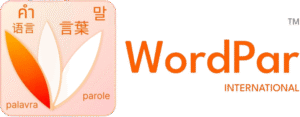
SUMMARY
Effective terminology management ensures consistency and accuracy in document translation by maintaining a comprehensive glossary and integrating it into translation tools. Translation service providers play a vital role in developing and updating terminology databases for quality results.

A medical translation company ensures precision through specialized workflows, expert translators, and compliance with local regulations.
Terminology management for translation refers to the process of effectively organizing and maintaining the specific language terms and phrases used in translation projects. This includes the creation and management of a comprehensive glossary that accurately reflects the terminology and language-specific concepts used in the source text.
The aim of terminology management for translation is to ensure the consistency and accuracy in the translation of documents. This includes identifying and defining key terms and expressions, establishing guidelines for their use and maintaining a central repository or database for easy reference.
Effective terminology management is essential for the quality and consistency of translated materials. It helps to avoid misunderstandings, ambiguities and errors in translations by providing translators with clear and standardized terms and phrases. It also increases efficiency by reducing the time spent on researching and checking terminology during the translation process.
The process of terminology management for translations usually involves the following steps:
1. Identification of terms: Identifying key terms and expressions in the source text that need to be translated and determining their correct translations or equivalents in the target language.
2. Definition and context: Providing clear and concise definitions for each term, along with any necessary contextual information or usage guidelines to ensure an accurate translation.
3. Consistency checks: Regularly check and compare the use of terminology in different translations to ensure consistency of terminology in all materials.
4. Maintenance and updating: Updating and expanding the terminology database when new terms or language variations appear in the source content.
5. Collaboration: Encouraging collaboration and feedback from translators, subject matter experts and other stakeholders to improve the terminology management process and the accuracy of translations.
6. Integration in translation tools: Integration of the terminology database into translation software or tools to facilitate its use and ensure consistent terminology across multiple projects and translators.
Through effective translation terminology management, translation companies can improve the overall quality and consistency of their translated materials. The translation service provider must develop a glossary and do adequate terminological research in order for the project to be a success and for the knowledge of the documents be concisely and systematically indexed. This improves communication, strengthens brand identity and enables successful global expansion in international markets.

WhatsApp us